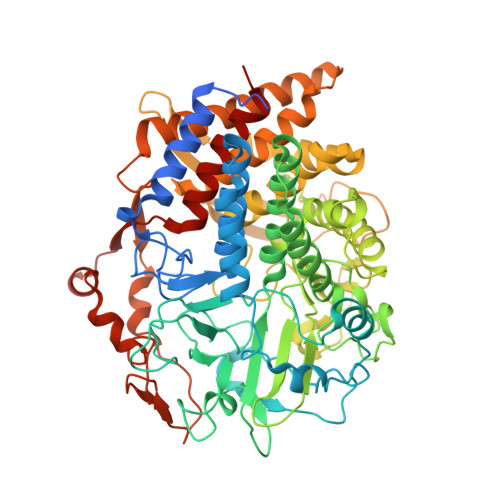Structures of exoglucanase from Clostridium cellulovorans: cellotetraose binding and cleavage
Tsai, L.-C., Amiraslanov, I., Chen, H.R., Chen, Y.W., Lee, H.L., Liang, P.H., Liaw, Y.-C.(2015) Acta Crystallogr F Struct Biol Commun 71: 1264-1272
- PubMed: 26457517
- DOI: https://doi.org/10.1107/S2053230X15015915
- Primary Citation of Related Structures:
4XWL, 4XWM, 4XWN - PubMed Abstract:
Exoglucanase/cellobiohydrolase (EC 3.2.1.176) hydrolyzes a ¦Â-1,4-glycosidic bond from the reducing end of cellulose and releases cellobiose as the major product. Three complex crystal structures of the glycosyl hydrolase 48 (GH48) cellobiohydrolase S (ExgS) from Clostridium cellulovorans with cellobiose, cellotetraose and triethylene glycol molecules were solved. The product cellobiose occupies subsites +1 and +2 in the open active-site cleft of the enzyme-cellotetraose complex structure, indicating an enzymatic hydrolysis function. Moreover, three triethylene glycol molecules and one pentaethylene glycol molecule are located at active-site subsites -2 to -6 in the structure of the ExgS-triethylene glycol complex shown here. Modelling of glucose into subsite -1 in the active site of the ExgS-cellobiose structure revealed that Glu50 acts as a proton donor and Asp222 plays a nucleophilic role.
Organizational Affiliation:
Molecular Science and Engineering, National Taipei University of Technology, 1, Section 3, Chung-Hsiao E. Road, Taipei 10608, Taiwan.






















